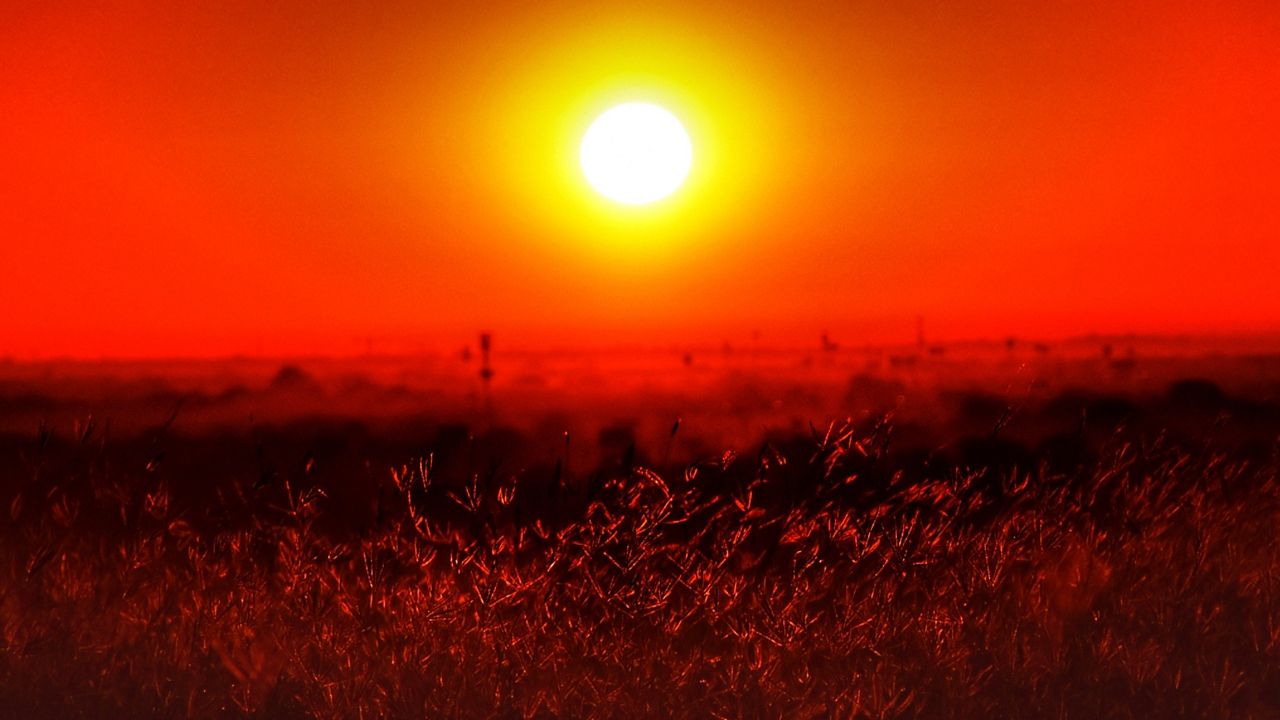We expect hot and dry conditions during the summer months across the Lone Star State, but sometimes the sky is hazy from Saharan dust, too.
It’s summer, and the forecast calls for a dusty or hazy sky because of Saharan dust or the Saharan Air Layer (SAL). What does this mean, and what's the impact to you and the weather?
Why summer?
Well, first let’s address the time of year. According to the National Oceanic and Atmospheric Administration (NOAA), the Saharan Air Layer, or large area of very dry, dusty air, forms over the Sahara Desert during the late spring, summer and even early fall, moving into the tropical Atlantic Ocean. This can happen as often as every three to five days.
Saharan dust is sometimes a part of the weather forecast during the summer in Texas because that’s when the peak of this air layer is. Activity increases in mid-June, peaking from lake June to mid-August, waning into mid to late August. It’s during this peak activity that the dust reaches the U.S. Gulf Coast, including the Lone Star State
The journey
How does the dust make the 5,000+ mile journey from Africa to Texas?
It’s about the upper-level weather pattern and the steering trade winds. The trade winds blow from east to west across the Atlantic Ocean, helping to carry all that dust suspended in the atmosphere into the Caribbean, and the Gulf of Mexico. This wind is also a natural steering mechanism for tropical systems during hurricane season.

In the upper levels of the atmosphere, a large, persistent area of high pressure in the Atlantic is the main steering for these dust storms in the U.S.. It’s what ultimately powers the trade winds.
The impact to weather
Summer is also the beginning of the Atlantic Hurricane Season, and there is a connection between Saharan dust and tropical activity. According to NOAA, this dust plume can suppress tropical development. Since the dusty air is very dry, and without half the amount of moisture found in the typical tropical atmosphere, this can create sinking air around a tropical system, which ultimately weakens or squashes development.
Another type of weather that isn't great for tropical development? Strong winds aloft. That's what you get within a plume of dust. These strong winds can increase vertical shear, which again leads to a hostile environment for tropical development.
Sinking air also warms, which leads to a more stable atmosphere. This can prevent cloud development, and that's what tropical systems need to develop and eventually grow.
The impact on health
The plume of dust can reduce air quality and even visibility. Some of the dust particulates coming from the Sahara are considered "fine", and can in result have a bigger impact on your health. These very small particulates can penetrate deeper into the lungs and can impact those with poor respiratory health or even allergies. So you'll want to limit your time outdoors, or stay inside if possible, during a dust event.
Photo opportunity
The orange, sandy particles that arrive from the Sahara Desert are also known to create colorful or vibrant sunrises and sunsets. It's physics! Light bounces off the dust particles, essentially accessing the entire color spectrum.




